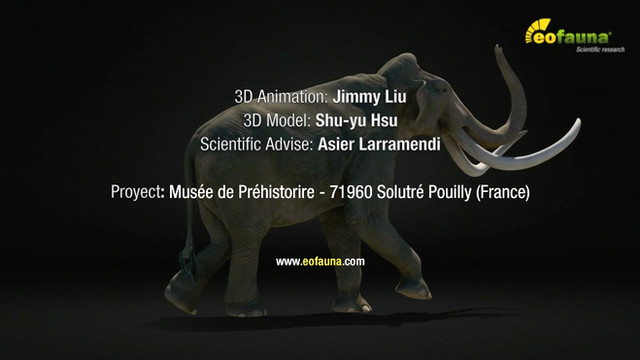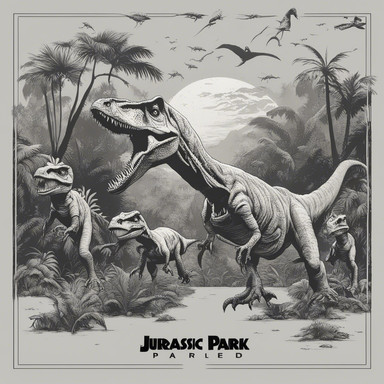HOME | DD
 EoFauna — Triceratops in the flesh (work in progress)
EoFauna — Triceratops in the flesh (work in progress)

#3d #model #design #dinosaurs #horridus
Published: 2015-10-02 08:49:02 +0000 UTC; Views: 7829; Favourites: 121; Downloads: 0
Redirect to original
Description
3D art: Shu-yu Hsu
Scientific advice: Rubén Molina & Asier Larramendi
Related content
Comments: 13

Many thanks!
According to Jaime Headden (qilong.wordpress.com/ ): "Whether there were muscular tissues in the naris is unknown, but given similar animals with extremely large narial openings, but being sauropsidan (and not, say mammalian) it is unlikely there were muscles of any sort around the fleshy nostril. The sides of the non-bony nostril would be surrounded by cartilages or other soft-tissues and these would either bulge out and begin flush with the sides of the bone, but not inset at the bony boundary; or, rather, they would be flush and not bulge. Likely, the former.
There is no evidence for a muscular cheek. None. The argument for them always involved rhetoric of the form "how will its food stay in the mouth," and however that question may be answered, it should be solved before assuming only muscular cheeks can work. Facial muscles like masseters are found only in mammals. Birds have a false masseter, a pseudomasseter, that is a product of portions of the typical jaw muscles moving onto a neomorphic bone in the cheek, called the suborbital. The sides of ornithischian jaws lack the association with these muscles that do not cause them to become extremely attenuated. These regions also typcially lack the necessary attachment sites, or none have been described -- only assumed."
👍: 0 ⏩: 2

Actually it's teeth were made to chew, and to chew the animal needs cheeks.
Also the fact that TODAY only mammals have muscular cheeks (tough triceratops could have had skinny ones), it does not justifies to make it cheeksless because it is an extinct animal with no direct descendants nowadays, so you can not make this comparation.
Also the shape of the part of the jaw that surrounded the teeth of a triceratops looks more like that of a cow than that of any bird or lizard (www.blouinartinfo.com/sites/de… www.skullsite.co.uk/cattle/cat… ).
The fact is that, due to the fact that it did not have a long neck, had a long snout and that it's teeth were made for chewing, it should have had cheeks (it would be barely be able to swallow without cheeks due to the facts that I stated before).
👍: 0 ⏩: 0

Great model! But I'd disagree about cheeks. Not necessarily to speak about analogue with mammals and their facial musculature to assume the existing of such structures - many non-direct evidences point on that to my mind.
👍: 0 ⏩: 1

Sure, about mammals Ok, you are right, although he only said that as an example only.
Jaime's though is really interesting and seems quite reasonable. He gives info supporting his idea, and we have to be present that extant sauropsida do not present cheeks.
👍: 0 ⏩: 1

As for living Archosauria, that's a pretty narrow group of animals comparing to dinosaurs. And other Sauropsida are too far to compare such small and specific features to my mind. They have much more basal differences than just cheeks.
Of course, that's a topic open for discussion as many others in paleontology. We're free to support any point of view if it has decent evidences. Everything is highly speculative here, but I just wanted to point out that comparing with mammals is not correct. Of course if you're searching muscular cheeks you won't find them, but some kind of skin folds (or something like that) seems pretty reasonable and realistic. Herbivorous dinosaurs do not need to open their mouths too widely.
👍: 0 ⏩: 2

By the way, here is a question.
¿Are we sure that Triceratops (www.deviantart.com/art/Tricera… ) and the rest of ceratopsians were able to close the mouth without leaving any space on the anterior part of the beak?
If they weren't able, then they would have problems for feeding in case they had cheeks.
👍: 0 ⏩: 1

I would suggest this to be posted on the actual page (scotthartman.deviantart.com/ar… ); perhaps Scott can tell you more about this particular specimen. Writing the question here might not reach to Scott.
👍: 0 ⏩: 0

Yes, totally agree. The debate is open, and both options are valid.
The fact is that usually these kind of soft tissues, morphologies or whatever, usually are assumed to be present without any rigorous research, just because we think (from our present point of view) that are logic. We consider really positive to question these assumptions, that's why we decided to do it like this and because there are scientific reasons (or at least suggestions) supporting this idea.
👍: 0 ⏩: 1

Without rigorous research; I always thought we've direct evidence about the possibility of cheeks on (at least some) ornithischians. This specimen (www.oucom.ohiou.edu/dbms-witme… ) has inset teeth, no obvious muscular attachment sites but also very likely to have cheeks. What is supporting this "cheek" plate? Could this be just a displaced armor? It's hard to say since it is labelled as "cheek plate" on these sites (tolweb.org/Nodosauridae ) or (static.squarespace.com/static/… ). Not to say this proves Triceratops have cheeks but the possibility of ornithischian cheeks is not solely based on (from our present point of view) plain "logic".
👍: 0 ⏩: 0




























